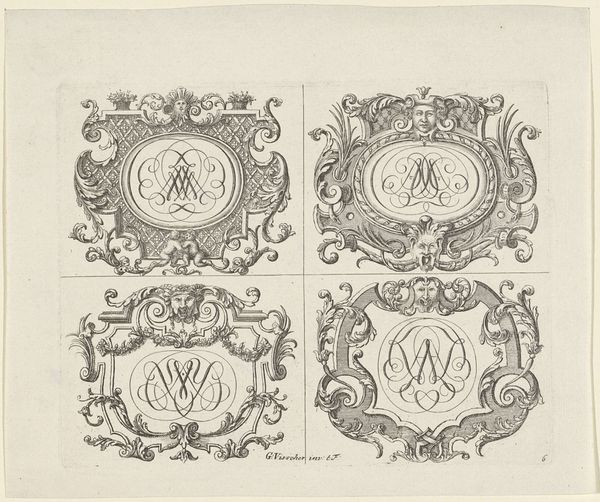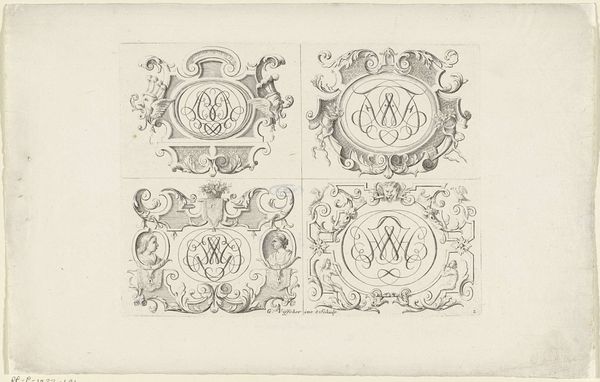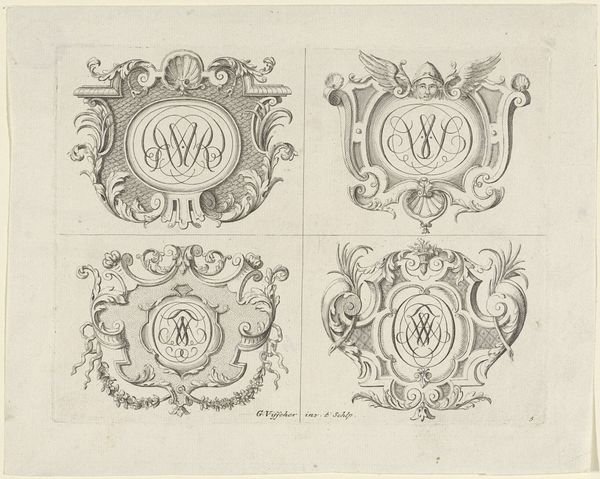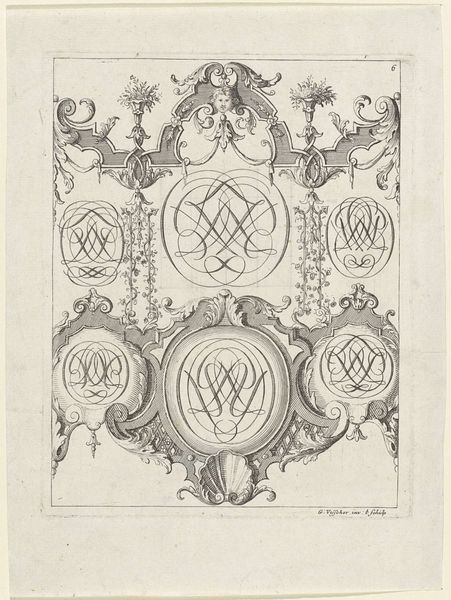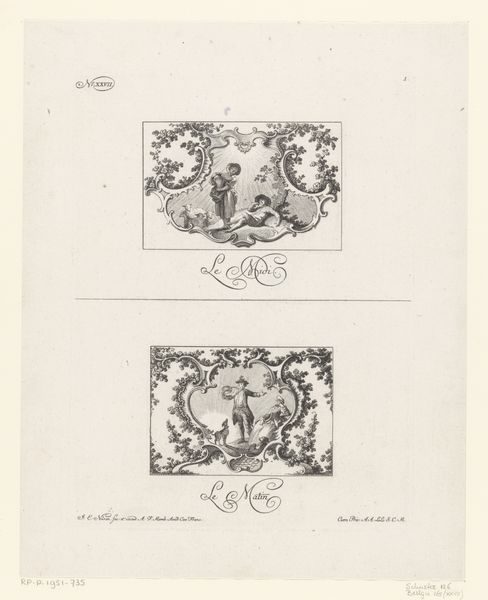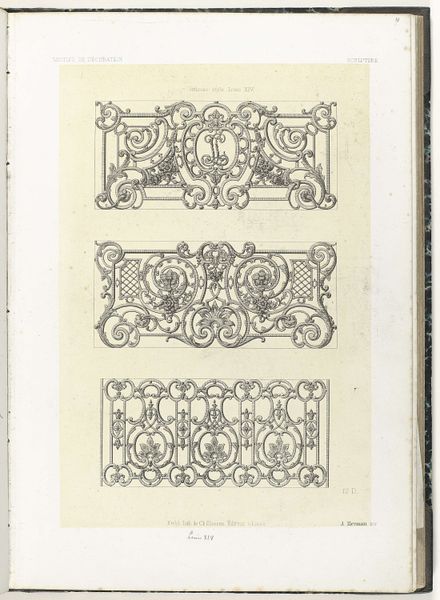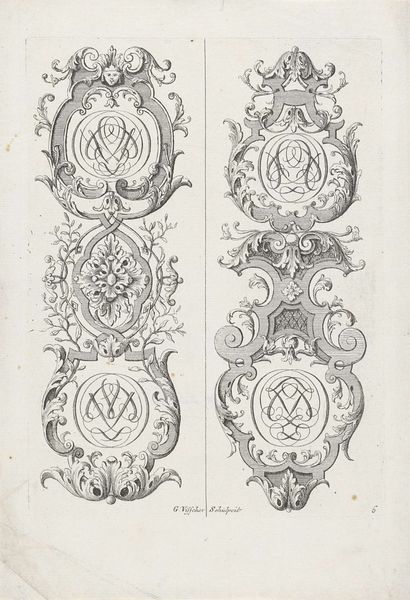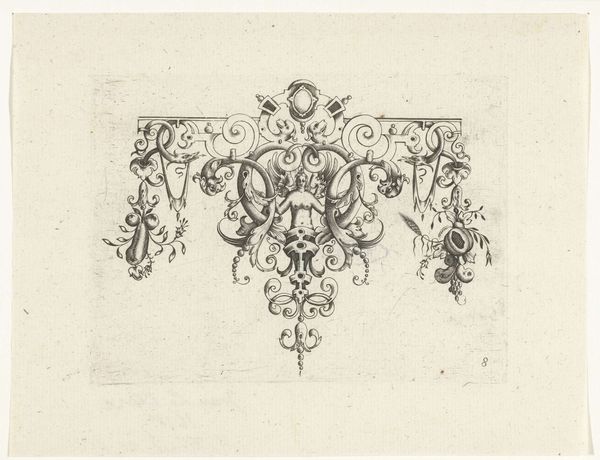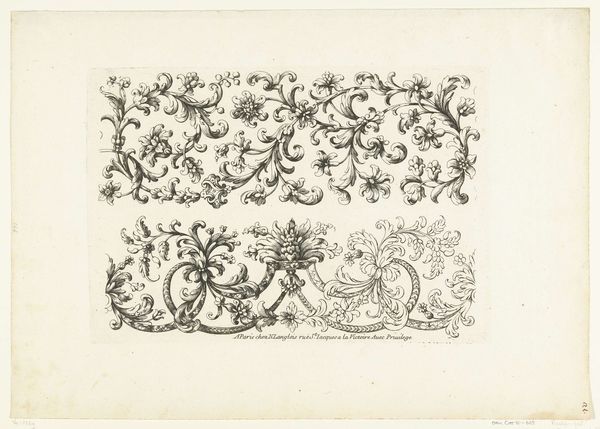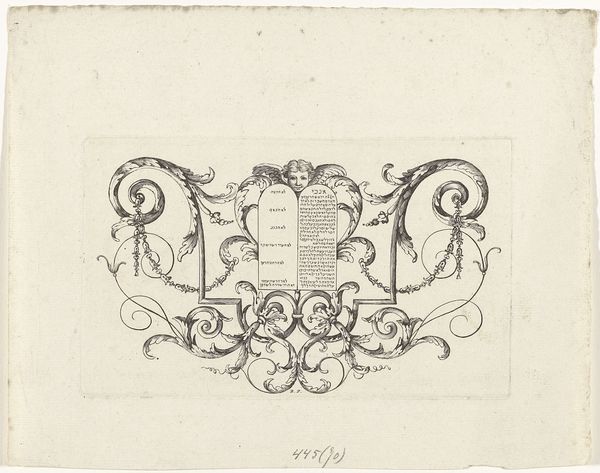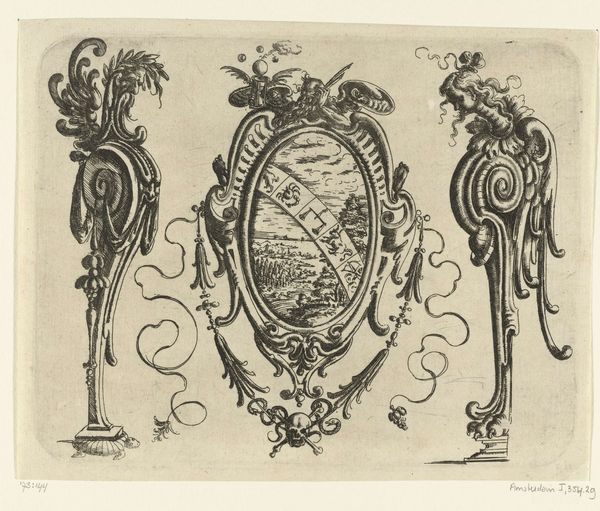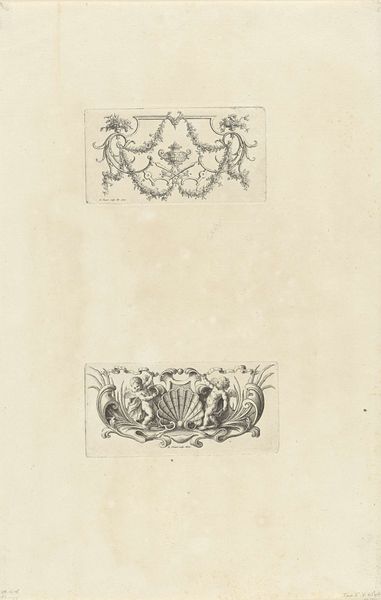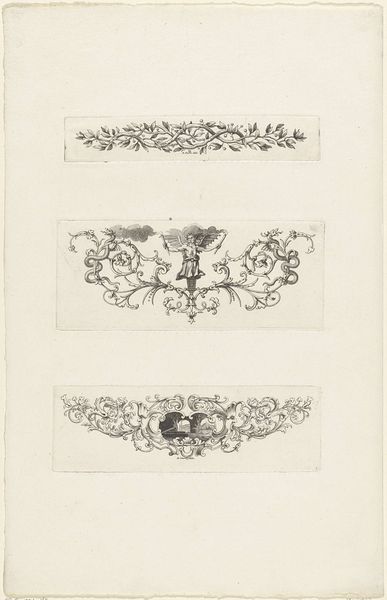
#
pen drawing
#
pen sketch
#
old engraving style
#
hand drawn type
#
personal sketchbook
#
pen-ink sketch
#
pen work
#
sketchbook drawing
#
sketchbook art
#
doodle art
Dimensions: height 155 mm, width 202 mm
Copyright: Rijks Museum: Open Domain
Editor: So, here we have "Vier cartouches met monogrammen," or "Four Cartouches with Monograms," created between 1690 and 1710 by Gerrit Visscher. They’re pen drawings, almost like elegant doodles. I’m curious, with their ornate frames and intertwining letters, what social function did they serve? What can we read from these monogrammed crests? Curator: These cartouches offer us a glimpse into the construction of identity and status in the late 17th and early 18th centuries. These monograms, meticulously crafted within elaborate frames, speak to the power and privilege associated with specific family names or individuals. Consider how these visual markers reinforce social hierarchies, making visible one’s belonging to a particular elite. What kind of statements were people trying to make using monograms? Editor: I guess it's like how brands today use logos, it is about broadcasting a carefully constructed identity, only these were far more exclusive and personal. How did these cartouches function in relation to the burgeoning concept of individual identity at that time? Curator: Exactly! While today brands may symbolize belonging to a lifestyle or value system, monograms back then firmly cemented one’s place within a hereditary lineage. The artistry is deployed to enshrine a patriarchal system. Did women have a different visual language during this period? Were they allowed such personal visual representation, or were they incorporated into family monograms as extensions of their husbands' status? Editor: I never thought about how gender and status are literally drawn into these designs! Now, when I look at these, I wonder whose stories are left out, and what alternative visual languages existed on the margins. Curator: Precisely! This drawing allows us to unpack questions about power and representation and opens avenues to investigate the hidden or suppressed visual narratives. It makes you question: who wasn't represented and why?
Comments
No comments
Be the first to comment and join the conversation on the ultimate creative platform.
